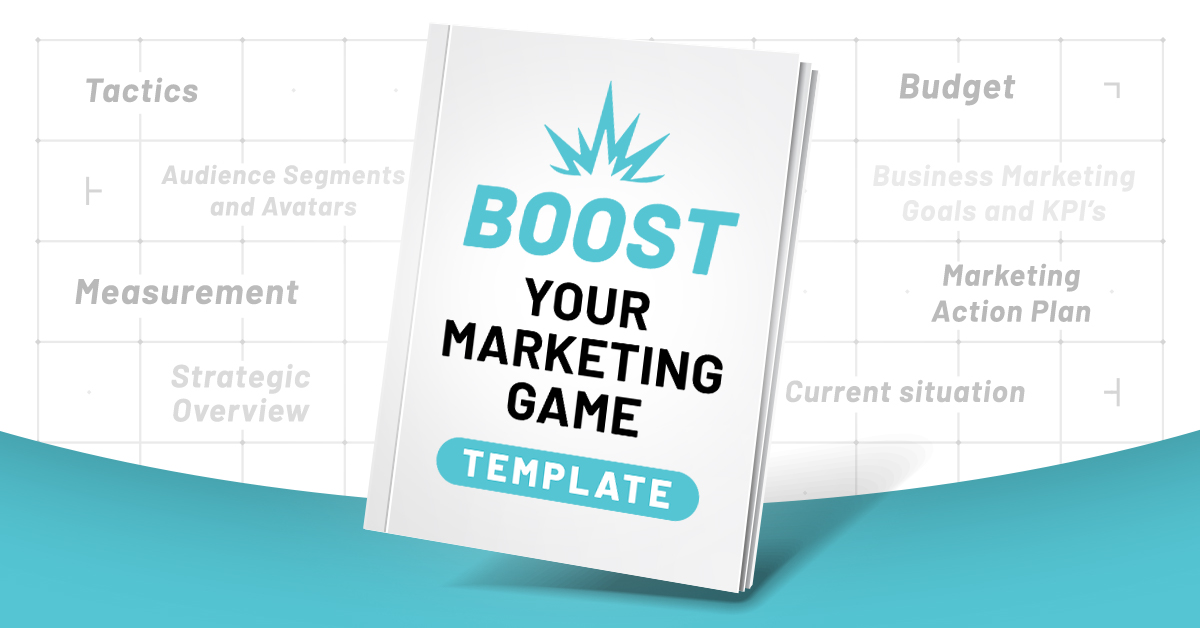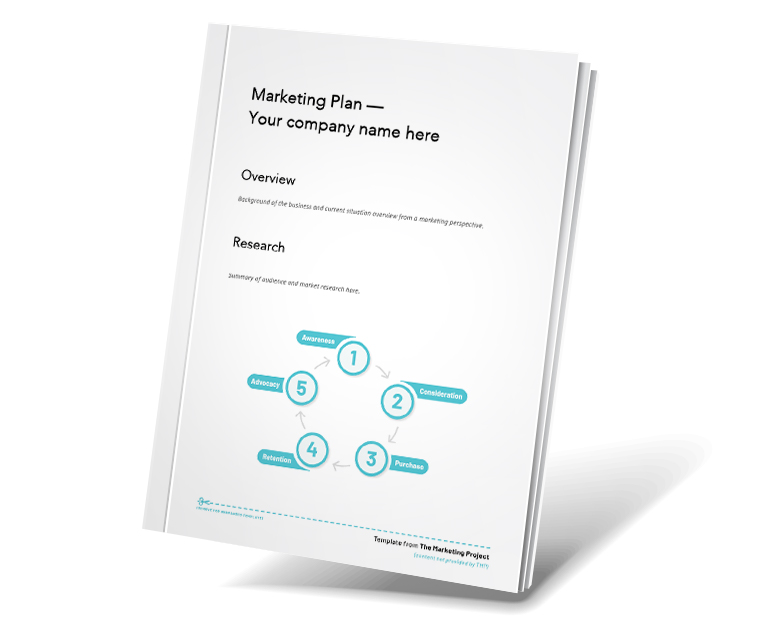





As business owners, we can all agree we need a marketing plan – even in the middle of a global pandemic. In fact, when everything seems so uncertain, it’s so important to have strategy in place. We need to document our business goals, reconnect with what our customers want and plan for doing what we need to do to get where we want to go.
But knowing you need a marketing plan and actually having one are two very different things. For your business, a marketing plan might only become urgent when your sales pipeline dries up—like during lockdown. At times like these, it’s clear that if we haven’t been doing any strategic marketing, and if we don’t have a strategy or clear messaging in place, we’ll find it difficult to grow the business once things return to normal.
Starting with a blank page can be daunting. So, to help you create a marketing plan, I’ll walk you through our marketing plan template. Then you can download a copy of the TMP Marketing Plan Template as a Word document at the bottom of this post.
All marketers will have their own thoughts on what to include in a marketing plan template, but they should at least cover these areas:
Let’s explore each of these in a little more detail.
By analysing your business’ current situation you’ll get a clear picture of where you’re at.
Be honest but be kind. The purpose of analysing your current situation is not to find a stick to beat yourself with. It’s a chance for you to honestly appraise where your business is at right now.
Include any marketing activities you have done in the past.
Run a SWOT analysis. Don’t groan! They might be ‘old skool’ but they still stand up in 2020 as a valuable business tool, especially when it comes to marketing.
The best business decisions are those made based on facts.
Gather customer research. This could be a review of data such as customer emails and calls. Note the common questions people have and where they experience pain points. These could make for good blog topics or other content pieces.
Conduct market research. You don’t need to spend thousands on outsourced qualitative interviews and focus-group sessions – there are many free/cheap and quick online options. You could conduct a survey. Share a link via your social media accounts and newsletter. Add it to your email signature. Incentivise people with a small prize for completing the survey, though be aware it might attract people only interested in freebies, not your true target market. To stay focused, you could make the prize something to do with your product or service such as a free one-hour consultation or free product.
Choose five past clients or customers to interview and schedule time to talk to them. Probe them to find out what their pain points were and how your product or service helped solve their problem. Record the interview and transcribe it. Look for common patterns in the words and phrases they use. Highlight these to include in your marketing communications.
To gather research on your general audience profile, conduct keyword research to discover the language people use when searching for products and services that you offer. You might be surprised by what people call things. Note the terms that have a decent monthly search volume that could be worth targeting in your marketing communications.
Write a brief, strategic overview of your marketing plan.
Don’t confuse strategy with tactics. ‘I’m going to send an email campaign once a month’ is not a strategy. It’s a tactic. Tactics are the details and specific actions of how you’ll implement your strategy.
A good strategy describes the end result and how you’ll get there.
Strategies are focused on goals. Write what you’ll attribute to a goal. For example:
I will reposition the brand to showcase our eco-friendly and sustainable outcomes so that we can attract more environmentally aware clients with sustainability goals of their own, so we can increase our market share by 13% in the local government market Australia-wide.
In this section of the marketing plan template, write down everything you can about who you’re targeting. Refer back to the research you gathered.
Gather more research if you need it. This could be demographic information.
Segment your audience. Think about where each audience segment is in the overall buying cycle.
Create individual avatars for your key audience segments. Give them a backstory and include their pain points and what their challenges are as well as some personal details if you can. What do they read and watch? Where do they live?
To help you craft an avatar, we created an unbranded customer persona you can download and use an example of what to include.
Download a sample of a customer persona
By having a clear picture of your overall business goals, you’ll know how to align your marketing goals so they feed into the success of your business goals.
Your business goals can include things like:
This is the part of the marketing plan template where you go into detail for each tactic and campaign you’ll implement over the next 12 months.
Split these tactics across 3 groups:
Asset creation looks at the types of assets you’ll create, including blog posts, social media posts, videos, podcasts, infographics, ads, eBooks, and other digital downloadables.
In the Marketing Plan Template, include which assets you’ll create.
Always-on marketing focuses on marketing tools like your website or social channel where people can access and buy your products or services and gather information at any time of the day or night. It also includes any digital products you create such as product specifications that people can download or other digital assets they can buy. Paid and organic search engine marketing to increase your visibility are other examples of always-on marketing.
Decide which always-on tactics you’ll employ.
Specific campaigns are marketing activities you’ll undertake for discrete projects. This could be a social media awareness and brand building campaign or a launch sequence for a new product or service.
Note which specific campaigns you’ll undertake.
Be very clear on the KPIs you set for your business’ marketing activities.
Track where you are right now so you have something to benchmark against.
Build a process for measuring and reporting on each campaign or marketing activity. Create dashboards specifically for this purpose.
Create a 12-month budget. Any shorter is not enough time to generate real value. Any longer and you’ll be looking too far into the future where you don’t have current metrics to predict your return on investment (ROI).
Break your budget down into different components for different types of marketing activities. For example:
Set a high-level, month-by-month plan that captures when you’ll do key work.
Drill down further to create a week-by-week action plan for you and your team to follow and stay on track.
Revise your week-by-week action plan each month,
and revise your month-by-month plan each quarter. Use your metrics to analyse:

Download and complete our Marketing Plan Template to help steer your business and keep your pipeline looking healthy.

Let's talk!